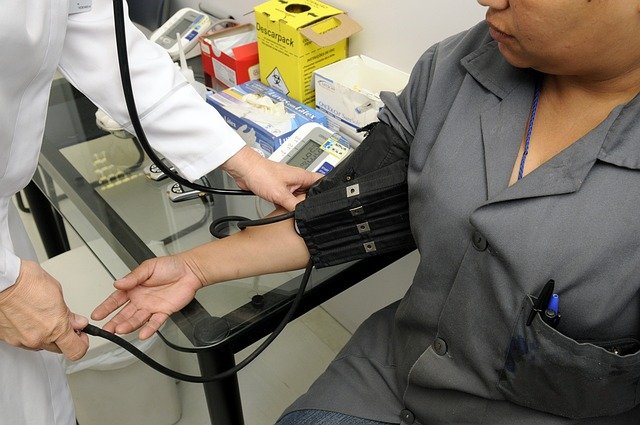Radiation Treatment Options for Prostate Cancer: What You Should Know Before Choosing
Prostate cancer is a significant health concern for men worldwide, and radiation therapy has emerged as a crucial treatment option. This article explores the various radiation treatment options available for prostate cancer, helping patients and their families make informed decisions. We'll delve into the different types of radiation therapies, their effectiveness, potential side effects, and factors to consider when choosing a treatment plan.

What are the main types of radiation therapy for prostate cancer?
Radiation therapy for prostate cancer primarily falls into two categories: external beam radiation therapy (EBRT) and brachytherapy. EBRT involves directing high-energy X-rays or protons at the prostate from outside the body. Common EBRT techniques include:
-
Three-dimensional conformal radiation therapy (3D-CRT)
-
Intensity-modulated radiation therapy (IMRT)
-
Image-guided radiation therapy (IGRT)
-
Stereotactic body radiation therapy (SBRT)
-
Proton beam therapy
Brachytherapy, on the other hand, involves placing radioactive sources directly into or near the prostate. It can be administered as low-dose-rate (LDR) or high-dose-rate (HDR) brachytherapy.
How do different radiation therapies compare in terms of effectiveness?
The effectiveness of radiation therapies for prostate cancer can vary depending on the stage and aggressiveness of the cancer. Generally, both EBRT and brachytherapy have shown high success rates in treating localized prostate cancer.
IMRT and IGRT have demonstrated excellent outcomes, with studies showing 5-year biochemical relapse-free survival rates of 85-90% for low-risk and intermediate-risk prostate cancer. SBRT, a newer technique, has shown promising results with similar effectiveness to conventional EBRT but in fewer treatment sessions.
Brachytherapy has also proven highly effective, particularly for low-risk and select intermediate-risk prostate cancers. LDR brachytherapy has shown 5-year biochemical relapse-free survival rates of up to 95% for low-risk patients.
What are the potential side effects and recovery times for different radiation options?
Side effects can vary depending on the type of radiation therapy used. Common short-term side effects for both EBRT and brachytherapy include:
-
Urinary frequency, urgency, or discomfort
-
Rectal irritation or bleeding
-
Fatigue
-
Erectile dysfunction
Long-term side effects may include:
-
Urinary incontinence
-
Rectal problems (e.g., diarrhea, bleeding)
-
Erectile dysfunction
Recovery times also differ. EBRT typically involves daily treatments over 5-9 weeks, with side effects often subsiding within a few weeks to months after treatment. Brachytherapy usually requires a shorter treatment period, but temporary side effects may persist for several weeks to months.
SBRT, with its shorter treatment course, may offer quicker recovery times for some patients. However, long-term data on side effects are still being gathered.
What recent advances have been made in radiation technology for prostate cancer?
Recent technological advancements have significantly improved the precision and effectiveness of radiation therapies for prostate cancer. Some notable innovations include:
-
MRI-guided radiation therapy: This technology combines real-time MRI imaging with radiation delivery, allowing for more accurate targeting of the prostate while sparing surrounding healthy tissue.
-
Hydrogel spacers: These biodegradable gels are injected between the prostate and rectum to reduce radiation exposure to the rectum, potentially minimizing side effects.
-
Focal therapy: This approach targets only the cancerous areas within the prostate, potentially reducing side effects while maintaining treatment efficacy.
-
Artificial intelligence (AI) in treatment planning: AI algorithms are being developed to optimize radiation treatment plans, potentially improving outcomes and reducing side effects.
-
Hypofractionation: This technique delivers higher doses of radiation in fewer sessions, potentially offering similar effectiveness with greater convenience for patients.
What factors should patients consider when evaluating radiation treatment plans?
When considering radiation treatment options for prostate cancer, patients should take into account several factors:
-
Cancer stage and risk level: Different radiation therapies may be more suitable for specific cancer stages and risk levels.
-
Overall health and age: A patient’s general health and life expectancy can influence treatment recommendations.
-
Potential side effects: Consider how different side effects might impact quality of life and daily activities.
-
Treatment duration and frequency: Some therapies require daily treatments over several weeks, while others may be completed in a shorter timeframe.
-
Availability of advanced technologies: Not all treatment centers may offer the latest radiation therapy techniques.
-
Experience of the treatment team: Look for centers and physicians with extensive experience in prostate cancer radiation therapy.
-
Personal preferences: Consider factors such as treatment schedule, potential for preserving sexual function, and overall impact on lifestyle.
What insights do experts offer on risks and outcomes associated with radiation?
Experts emphasize that while radiation therapy is generally effective for prostate cancer, it’s crucial to weigh the potential benefits against the risks. Dr. Anthony D’Amico, a radiation oncologist at Dana-Farber Cancer Institute, notes that “The key is to tailor the treatment to the individual patient, considering their cancer characteristics, overall health, and personal preferences.”
Radiation oncologists stress the importance of long-term follow-up, as some side effects may develop years after treatment. Dr. Michael Zelefsky of Memorial Sloan Kettering Cancer Center highlights that “Advances in radiation technology have significantly reduced the risk of severe side effects, but patients should be aware that some degree of urinary, bowel, or sexual dysfunction may occur.”
Experts also emphasize the need for multidisciplinary care. Dr. Oliver Sartor, Medical Director of Tulane Cancer Center, states, “Collaboration between urologists, radiation oncologists, and medical oncologists is crucial to ensure patients receive the most appropriate treatment for their individual case.”
In conclusion, radiation therapy offers several effective options for treating prostate cancer. By understanding the various treatment modalities, their potential benefits and risks, and considering individual factors, patients can work with their healthcare team to make informed decisions about their prostate cancer treatment.
This article is for informational purposes only and should not be considered medical advice. Please consult a qualified healthcare professional for personalized guidance and treatment.




